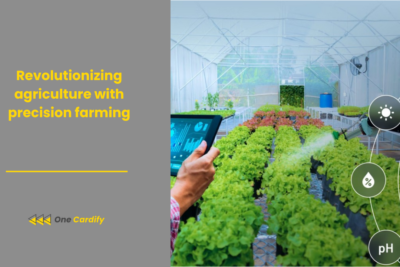
The impact of 3D printing on manufacturing
3D technology influences to the manufacturing market can be named as the additive manufacturing revolution. This technology not only empowered production processes but also has liberated the chain of innovations that have blurred the borders between design, prototyping, and production.The introduction of 3D printing has enabled the direct conversion of digital plans into tangible objects, thereby saving time and cost incurred in the production process through the traditional methods. Furthermore, it has provided opportunities for individualization, complex patterns, and environmentally friendly technologies.This blog focuses on the revolutionary impact of 3D printing on the manufacturing sector, and covers its benefits, challenges, and future prospects. We aim to focus on a comprehensive explanation of what makes this technology indispensable in production today.
Related content
The Genesis of Additive Manufacturing
The concept of additive manufacturing is not entirely new and it came into existence in the 1980s but it has gained pace in the last two decades. Additive manufacturing is quite the opposite of subtractive manufacturing in which a material is removed to create a product, rather material is add in layers to create objects here. This fundamental difference has created chances for creative methods of production.Originally, it was used primarily for prototyping, but advancements in materials and technology have broadened its application to production in many sectors such as aerospace, automotive, and medical devices.The primary advantage of 3D printing is that it can produce complex geometries which are impossible or too costly to produce with traditional methods. Therefore manufacturers capability enables to create efficient and coherent components and system.Furthermore, cost flexibility of the technology has brought about considerable prototyping and manufacturing cost reductions, particularly in small run production where there is an option of avoiding tooling or molds costs.
Related content
Customization at Scale
The customizability that 3D printing offers is one of the revolutionary features. From custom medical implants to custom automotive parts – this technology enables custom manufacturing.However, manufacturers have the flexibility to respond to the needs of the consumers and manufacture customized goods without the cost and time limitations associated with custom manufacturing.The change also enables manufacturers to address the increasing personalization market with very many opportunities to participate including developing new products for new markets.Moreover, the flexibility of 3D printing processes allows for more iterative design process, thus fast prototyping and testing. It makes the product development cycle shorter and enhances the ability of the innovation.
Sustainable Manufacturing Practices
Environmental sustainability has become an essential factor in manufacturing. In this respect, 3D printing is beneficial because it is an additive process rather than a subtractive process, and as a result minimizes the extent of waste, unlike in traditional technologies that produce large amounts of scrap of an entire material.In addition, the utilization of recycle materials is also allowed and lightweighting of parts, which can decrease energy usage and carbon footprints significantly, especially in industries such as aerospace and automotive.3D printing also enables the simplification of storage and transport costs by means of efficient supply chains and the elimination of stock through on-demand production.Lastly, local production capacity of technology can reduce logistics associated with global supply chains, in the process, curbing emissions and promoting local economies.
Challenges and Future Directions
Even though there are numerous advantages of 3D printing, there are some problems that need to be addressed for it to reach its full potential. Limitations in technology, material and high cost of initial investment is also some of the challenge. However, the skills gap is another significant issue, as the workforce should be trained in additive manufacturing technologies to meet the requirements of the changing industry.However, the never-ending development in this direction very rapidly overcomes these constraints, providing more possibilities and better materials and technologies. The future development of technology will enable its combination with other digital manufacturing technologies, such as CNC machining and robotic automation, which may ultimately create new manufacturing paradigms characterized by more resilient, flexible, and sustainable manufacturing ecosystems.
Conclusion: The Lasting Impact on Manufacturing
The 3D printing technology has revolutionized the production landscape. Its ability to elevate productiveness, generate wealth and clean environment turns it into one of the fundamental elements of the future of manufacturing.However, there are still challenges; yet, ongoing developments and increasing adoption are evidence of the technology’s potential to transform production processes to flexible, cost effective, and ecofriendly.As for the prospects, it is obvious that 3D printing is going to be a crucial stream for the building sector, leading it to the production era that is focused on custom approach, sustainability, and productivity.
3D printing, or additive manufacturing, is a process of making three dimensional solid objects from a digital file. It involves the layer-by-layer addition of material to create an object.
3D printing can significantly reduce manufacturing costs by minimizing the need for expensive molds or tooling, lowering material waste, and cutting down on transportation and inventory expenses through localized production.
While traditionally used for prototyping, advancements in 3D printing technology now enable its use for mass production, especially for custom and complex parts. However, the efficiency depends on the specific application and material used.
3D printing is generally considered more environmentally friendly than traditional manufacturing methods. It reduces waste, allows for the use of recycled materials, and can decrease energy consumption and emissions by optimizing part designs and facilitating local production.
Industries such as aerospace, automotive, healthcare, and consumer goods are significantly benefiting from 3D printing, leveraging its strengths in customization, complexity, and rapid prototyping.
Key challenges include technical limitations, material availability and cost, the need for skilled operators, and the initial investment in equipment. However, continuous advancements are addressing these issues.
3D printing is set to revolutionize the manufacturing industry by enabling more efficient, flexible, and sustainable production processes, combined with greater design freedom and the potential for significant cost reductions.
Driving Forward: 3D Printing and Its Lasting Influence on Manufacturing
The age of 3D printing in manufacturing releases a new era of creativity and productivity. Despite that the boundary of its capacities was believed to be understood, yet, it exceeds that, breaching the former limits of design, manufacture, and environmental sustainability.Although we receive these changes, the manufacturing sector should adapt, develop, and prepare for a period in which the importance of additive manufacturing will be crucial. The forward way is full of opportunities and 3D printing is one of the leaders in moving ahead before the rest towards a more creative and affordable mode of production.The 3D printing is not only in the invention itself but on how it allows the manufacturers to reconsider what can be done. The implications of this printing technology will grow as further investigations are carried out and it will define the future of manufacturing in ways we are only beginning to understand.To sum up, 3D printing is a sign of innovation, a substitute for the traditional ways of production and a way to the future of the efficiency and customisation and sustainability.






Related Posts